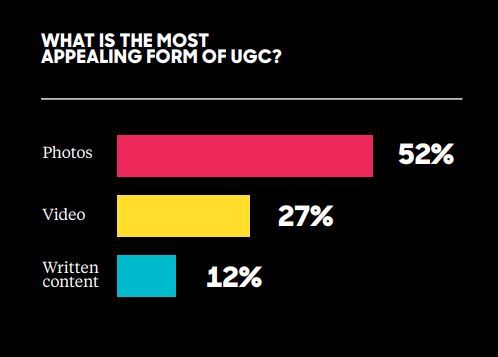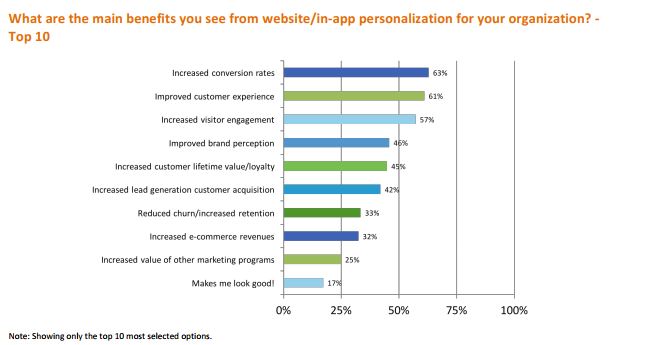Mastering the art of conversion rate optimization (CRO) can elude even the most experienced marketer. Tapping into the mindset of your target audience to get them to first pay attention, then make a purchase is the most prized skill an advertiser can possess. Obviously, this does not come easy.
However, knowing what appeals to your audience and gets them to convert results in innumerable benefits for your business. The biggest, and most obvious, is the direct boost to sales. When your site pushes people further down the funnel and makes them take action, it yields a tangible boost to ROI.
Other advantages of getting CRO right include:
- Increasing site dwell time (better for bounce rates and engagement)
- Greater insight into user behavior
- Removing the guessing game of the consequences of site changes or alterations
At a time when smartphone ownership is at a record high and optimal load times for sites are within three seconds across platforms, it is clear that consumer attention is difficult to grab. Holding that attention to the point of completing an action or sale is therefore even more valuable. Even a 100-millisecond delay can hurt conversion rates up to 7%.

Image source: Forbes
So what can you do to capitalize on the brief opportunity you have to convert a website visitor into a paying customer?
We’ve compiled the best CRO practices for 2018 to help you answer that question, and provide tips for improving your brand’s online presence. When you integrate these suggestions into your digital marketing strategy for the coming year, you give yourself a chance to understand your audience more effectively, make adjustments that you know will succeed, and boost your bottom line.
Embrace Artificial Intelligence
The advent of AI and machine learning is here, and it’s becoming increasingly accessible to even the smallest business owners.
The biggest brands in the business have already demonstrated the potential that machine learning and AI offer from a CRO perspective:
- Netflix leverages machine learning for providing better recommendations to viewers. Doing so makes their service more valuable, which is proven by the fact that they acquired over 5 million new subscribers in Q3 2017.
- Amazon and its marketing platform, AWS, use machine learning to tailor product recommendations, help catch purchasing fraud, and more accurately predict future demand.
- Facebook Messenger allows brands to launch chatbots that communicate directly with consumers. These can assist with customer service needs, or they can let users purchase products or book services directly from the app.
In all of the instances, AI is leverages in order to provide a superior user experience. This level of innovation is necessary in order to capture what was already discussed as highly valuable consumer attention.
When you tailor your content more specifically to individuals through automated tools or provide a unique platform for them to engage with your business, this builds value. When people perceive the value to exceed the cost, they will convert.
Harness AI and ML on your own site to take advantage of the advantages to your value-prop this technology can provide. Tools like Sapient and Retro Analytics harness AI to evaluate websites and provide conversion optimization suggestions. These and plenty of other companies offer AI and ML programs even the smallest marketer can leverage for CRO success.
Implement User-Generated Content
These days, people are trusting what their peers have to say over what brands are directly advertising more so than ever. In fact, 76% of respondents in a recent Olapic study stated that they trust content posted by other users more than media posted by advertisers. Additionally, Pew research reveals that 82% of online shoppers check for online reviews and ratings when purchasing a product for the first time.
 Image source: Shanebarker
Image source: Shanebarker
The best way to integrate user content into your CRO strategy is to incorporate reviews, testimonials, or really any other form of consumer content into a visual format. You’re dealing with a population base that consists of 65% visual learners, which means putting UGC into an infographic, video, or another form of visual media is the key to grabbing their attention
Incorporate this content across platforms for a fully optimized CRO strategy: social media, blog, etc. For example, including an image of a customer with a quote of their testimonial directly within the image is a powerful graphic that can be used on a Facebook post, on a product landing page, and your homepage.
Personalize the Experience
We’ve already discussed how artificial intelligence and machine learning are important ways to provide a level of personalization that is key to earning conversions. To expand upon this, there are other personalization techniques that can be implemented on your site as part of an effective CRO strategy. A recent CXL survey of CRO marketers revealed that they consider personalization to be among the top 10 most valuable conversion optimization techniques.
To reiterate the importance of personalization, consider these facts:
- 56% of shoppers are more likely to make a purchase online or in-store if the brand recognizes them by name
- 65% of people are more likely to make a purchase from a personalized and relevant promotion
- 88% of marketers surveyed in an Evergage report cite measurable improvements due to personalization
 Image Source: Shanebarker
Image Source: Shanebarker
Most marketers that use on-site personalization (67%) employ rule-based user segmentation as their strategy. With this method, you can separate audiences based on certain factors or behaviors, such as gender or geographic location. Then, when a certain group visits your site, they see a version of it that is targeted specifically at them.
Another opportunity for personalization puts the user in the driver seat. As demonstrated by SBI, they have visitors tailor the services they want and expect right from initial registration on their site. This method requires a little less work than rule-based segmentation, while still offering a unique and relevant experience to individual users.
For your CRO strategy to succeed in 2018, you need to be aware of the latest innovations and expectations. These days, grabbing and maintaining consumer attention long enough to get them to convert is both incredibly difficult and competitive. Employing new innovations like AI, integrating user-generated content, and tailoring digital experiences to be as personalized as possible are all means of optimizing your brand and earning conversions more effectively.
About the Author -:
Rae is a Content Strategist at Taktical Digital, an award-winning performance marketing agency in NYC. When she’s not optimizing landing pages, writing Facebook ad copy, or curating the company’s weekly newsletters, Rae enjoys exploring the culinary scene of the city. Her other passions include learning Mandarin, traveling, cooking, and of course writing.




